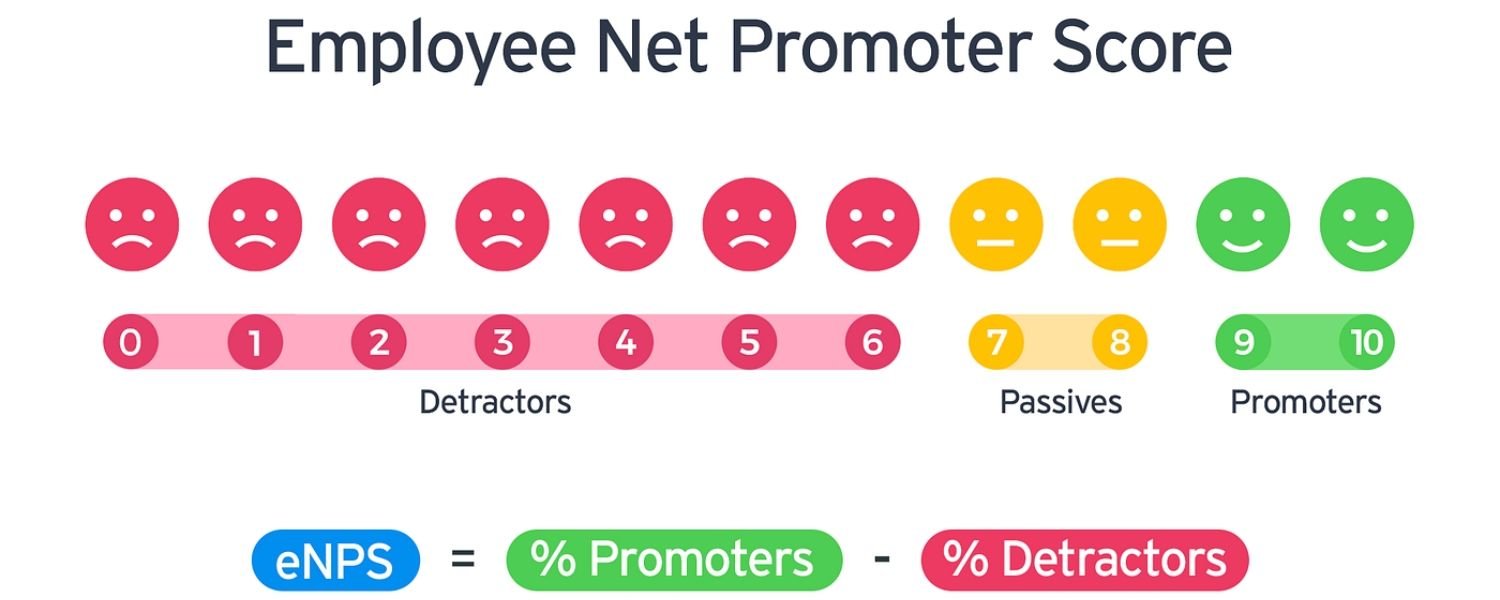To navigate the HR role, professionals rely on a set of crucial indicators known as HR Metrics to Track. These metrics serve as compass points, providing insights into various facets of the workforce, from recruitment and employee engagement to diversity and well-being. This comprehensive exploration delves into 20 key HR metrics, each pivotal role in shaping and optimizing the employee experience.
HR Metrics to Track offers a data-driven lens through which organizations can understand, evaluate, and enhance their human capital strategies. From the intricacies of turnover rates to the broader spectrum of diversity and inclusion indices, these metrics empower HR professionals to make informed decisions that impact both individual careers and the overarching success of the company.
As we journey through each metric, we will not only uncover their significance but also explore the broader landscape of services and solutions that amplify the effectiveness of HR practices. Let's embark on this exploration, shedding light on the metrics illuminating the path to organizational excellence.
 HR Metrics to Track- Employee turnover rate is a crucial HR metric, representing the percentage of employees leaving an organization within a specified time frame. High turnover can impact morale and productivity, making it imperative for HR professionals to monitor and manage this metric closely. Companies can create a more stable and engaged workforce by implementing effective retention strategies based on insights gained from tracking turnover. Explore the important HR metrics to track and learn how to mitigate turnover effectively.
HR Metrics to Track- Employee turnover rate is a crucial HR metric, representing the percentage of employees leaving an organization within a specified time frame. High turnover can impact morale and productivity, making it imperative for HR professionals to monitor and manage this metric closely. Companies can create a more stable and engaged workforce by implementing effective retention strategies based on insights gained from tracking turnover. Explore the important HR metrics to track and learn how to mitigate turnover effectively.
 HR Metrics to Track Time-to-Fill is a pivotal HR metric that measures the duration it takes to fill open positions within a company. This metric directly influences organizational productivity and efficiency. By consistently monitoring Time-to-Fill, HR professionals can identify bottlenecks in the recruitment process, optimize strategies, and ensure the timely onboarding of new talent. Discover the top HR metrics to track recruitment and stay ahead in the competitive talent acquisition landscape.
HR Metrics to Track Time-to-Fill is a pivotal HR metric that measures the duration it takes to fill open positions within a company. This metric directly influences organizational productivity and efficiency. By consistently monitoring Time-to-Fill, HR professionals can identify bottlenecks in the recruitment process, optimize strategies, and ensure the timely onboarding of new talent. Discover the top HR metrics to track recruitment and stay ahead in the competitive talent acquisition landscape.
 HR Metrics to Track- The Employee Productivity Index is a comprehensive metric that assesses the efficiency and output of individual employees and teams. Tracking this metric empowers HR professionals to identify high-performing individuals, recognize areas for improvement, and implement targeted training and development programs. By continually monitoring and refining the Employee Productivity Index, organizations can foster a culture of continuous improvement and elevate overall workforce performance. Explore examples of the best HR metrics to track for boosting employee productivity.
HR Metrics to Track- The Employee Productivity Index is a comprehensive metric that assesses the efficiency and output of individual employees and teams. Tracking this metric empowers HR professionals to identify high-performing individuals, recognize areas for improvement, and implement targeted training and development programs. By continually monitoring and refining the Employee Productivity Index, organizations can foster a culture of continuous improvement and elevate overall workforce performance. Explore examples of the best HR metrics to track for boosting employee productivity.
HR Metrics to Track- Training ROI is a critical HR metric that evaluates the effectiveness of training programs by measuring the tangible benefits they bring to the organization. By analyzing the Training ROI, HR professionals can ensure that investments in employee development yield measurable results. This metric enables organizations to make data-driven decisions regarding training initiatives, ultimately contributing to workforce growth and skill enhancement. Learn about HR metrics examples and how Training ROI stands out among them.
 HR Metrics to Track- The Diversity and Inclusion Index is a key HR metric that measures the level of diversity within an organization and evaluates the effectiveness of inclusion initiatives. By consistently tracking this metric, HR professionals can identify areas for improvement, measure progress in creating a diverse and inclusive workplace, and implement targeted strategies to enhance diversity and foster a sense of belonging among all employees. Discover essential HR metrics to track for building an inclusive workplace.
HR Metrics to Track- The Diversity and Inclusion Index is a key HR metric that measures the level of diversity within an organization and evaluates the effectiveness of inclusion initiatives. By consistently tracking this metric, HR professionals can identify areas for improvement, measure progress in creating a diverse and inclusive workplace, and implement targeted strategies to enhance diversity and foster a sense of belonging among all employees. Discover essential HR metrics to track for building an inclusive workplace.
 HR Metrics to Track- The Absence Rate is a critical HR metric measuring employee absences' frequency and duration. Monitoring this metric provides insights into workforce wellness, identifies potential burnout or dissatisfaction, and allows HR professionals to implement strategies that promote a healthy diet and work-life balance. By addressing the factors contributing to high absence rates, organisations can create a supportive environment that enhances employee well-being and overall job satisfaction. Explore HR metrics you should track and data management best practices for effective absence management.
HR Metrics to Track- The Absence Rate is a critical HR metric measuring employee absences' frequency and duration. Monitoring this metric provides insights into workforce wellness, identifies potential burnout or dissatisfaction, and allows HR professionals to implement strategies that promote a healthy diet and work-life balance. By addressing the factors contributing to high absence rates, organisations can create a supportive environment that enhances employee well-being and overall job satisfaction. Explore HR metrics you should track and data management best practices for effective absence management.
 HR Metrics to Track- The Promotion Rate is a vital HR metric that evaluates the frequency employees are promoted within the organisation. By tracking this metric, HR professionals can assess the effectiveness of talent development programs, identify high-potential individuals, and create a culture that values internal growth. This metric is a valuable indicator of the organisation's commitment to nurturing and advancing its talent from within. Learn about the most important metrics you should track for promoting internal career progression.
HR Metrics to Track- The Promotion Rate is a vital HR metric that evaluates the frequency employees are promoted within the organisation. By tracking this metric, HR professionals can assess the effectiveness of talent development programs, identify high-potential individuals, and create a culture that values internal growth. This metric is a valuable indicator of the organisation's commitment to nurturing and advancing its talent from within. Learn about the most important metrics you should track for promoting internal career progression.
 HR Metrics to Track- The Performance Ratings Distribution metric evaluates the distribution of performance ratings across the organisation. Tracking this metric enables HR professionals to identify patterns, ensure evaluation fairness, and implement targeted interventions to improve overall performance. By consistently monitoring and analysing the Performance Ratings Distribution, organizations can enhance the accuracy and effectiveness of their performance management processes. Explore HR management services that align with effective performance evaluation and feedback.
HR Metrics to Track- The Performance Ratings Distribution metric evaluates the distribution of performance ratings across the organisation. Tracking this metric enables HR professionals to identify patterns, ensure evaluation fairness, and implement targeted interventions to improve overall performance. By consistently monitoring and analysing the Performance Ratings Distribution, organizations can enhance the accuracy and effectiveness of their performance management processes. Explore HR management services that align with effective performance evaluation and feedback.
10. Cost per Hire: Streamlining Recruitment with HR Metrics to Track
HR Metrics to Track- Cost per Hire is a crucial HR metric that assesses the total cost incurred by the organization to fill a vacant position. By consistently tracking this metric, HR professionals can optimize recruitment processes, allocate resources efficiently, and make informed decisions about the most cost-effective hiring strategies. Cost per Hire provides valuable insights into the financial efficiency of the recruitment function, allowing organizations to maximize their return on investment in talent acquisition. Dive into effective HR solutions and services that optimize the cost per Hire.
 HR Metrics to Track- Training Completion Rate is a key HR metric measuring the percentage of employees completing training programs. By monitoring this metric, HR professionals can assess the effectiveness of training initiatives, identify areas for improvement, and ensure that employees have the necessary skills to perform their roles effectively. A high Training Completion Rate indicates a commitment to continuous learning and development within the organization. Explore action on employee harassment complaints and how it aligns with a culture of continuous improvement through training.
HR Metrics to Track- Training Completion Rate is a key HR metric measuring the percentage of employees completing training programs. By monitoring this metric, HR professionals can assess the effectiveness of training initiatives, identify areas for improvement, and ensure that employees have the necessary skills to perform their roles effectively. A high Training Completion Rate indicates a commitment to continuous learning and development within the organization. Explore action on employee harassment complaints and how it aligns with a culture of continuous improvement through training.
HR Metrics to Track- Revenue per Employee is a critical HR metric that evaluates the organization's financial performance relative to its workforce size. By consistently tracking this metric, HR professionals can assess the workforce's revenue efficiency and identify improvement opportunities. Revenue per Employee provides valuable insights into the overall productivity and effectiveness of the organization, guiding strategic decisions related to workforce optimization and business growth. Learn about effective strategies for data management best practices concerning revenue per Employee.
 HR Metrics to Track- The Job Satisfaction Index is a vital HR metric that measures employee satisfaction and happiness within the workplace. By monitoring this metric, HR professionals can gauge the overall well-being of the workforce, identify areas for improvement, and implement strategies to enhance job satisfaction. A high Job Satisfaction Index indicates a positive workplace culture and increases employee retention and engagement. Discover how HR metrics you should track are crucial in fostering workplace happiness.
HR Metrics to Track- The Job Satisfaction Index is a vital HR metric that measures employee satisfaction and happiness within the workplace. By monitoring this metric, HR professionals can gauge the overall well-being of the workforce, identify areas for improvement, and implement strategies to enhance job satisfaction. A high Job Satisfaction Index indicates a positive workplace culture and increases employee retention and engagement. Discover how HR metrics you should track are crucial in fostering workplace happiness.
 HR Metrics to Track- Succession Planning Effectiveness is a crucial HR metric that assesses the organization's ability to identify and develop future leaders within the existing talent pool. By consistently tracking this metric, HR professionals can ensure a robust pipeline of skilled individuals ready to step into key roles, reducing the impact of leadership gaps on organizational continuity. Succession Planning Effectiveness is a key driver of long-term organizational success and resilience. Explore the significance of effective HR solutions services in building a strong leadership pipeline.
HR Metrics to Track- Succession Planning Effectiveness is a crucial HR metric that assesses the organization's ability to identify and develop future leaders within the existing talent pool. By consistently tracking this metric, HR professionals can ensure a robust pipeline of skilled individuals ready to step into key roles, reducing the impact of leadership gaps on organizational continuity. Succession Planning Effectiveness is a key driver of long-term organizational success and resilience. Explore the significance of effective HR solutions services in building a strong leadership pipeline.
 HR Metrics The Workforce Diversity Ratio is a vital HR metric that evaluates the representation of diverse groups within the organization. By consistently tracking this metric, HR professionals can assess progress in promoting diversity, identify areas for improvement, and implement targeted strategies to enhance inclusivity. A diverse workforce fosters innovation, creativity, and a broader range of perspectives, contributing to the overall success and adaptability of the organization. Discover the role of essential HR metrics to track in fostering a culture of inclusivity.
HR Metrics The Workforce Diversity Ratio is a vital HR metric that evaluates the representation of diverse groups within the organization. By consistently tracking this metric, HR professionals can assess progress in promoting diversity, identify areas for improvement, and implement targeted strategies to enhance inclusivity. A diverse workforce fosters innovation, creativity, and a broader range of perspectives, contributing to the overall success and adaptability of the organization. Discover the role of essential HR metrics to track in fostering a culture of inclusivity.
HR Metrics to Track- Cost of Training per Employee is a critical HR metric that assesses the financial investment made by the organization in training and development per Employee. By consistently monitoring this metric, HR professionals can ensure the efficient allocation of resources, assess the return on investment in employee development, and make informed decisions about optimizing training programs. The cost of Training per Employee provides valuable insights into the organization's commitment to employee growth and skill enhancement. Explore how effective HR management services contribute to wise investments in employee training.
 HR Metrics to Track- Workplace Flexibility Adoption Rate is a key HR metric that measures the extent to which employees and teams embrace flexible work arrangements. By consistently tracking this metric, HR professionals can assess the success of workplace flexibility initiatives, identify trends, and implement strategies to enhance work-life balance. Workplace Flexibility Adoption Rate is crucial for creating a dynamic and adaptable workplace that meets the evolving needs of employees. Discover top HR metrics' role in shaping a flexible and resilient work environment.
HR Metrics to Track- Workplace Flexibility Adoption Rate is a key HR metric that measures the extent to which employees and teams embrace flexible work arrangements. By consistently tracking this metric, HR professionals can assess the success of workplace flexibility initiatives, identify trends, and implement strategies to enhance work-life balance. Workplace Flexibility Adoption Rate is crucial for creating a dynamic and adaptable workplace that meets the evolving needs of employees. Discover top HR metrics' role in shaping a flexible and resilient work environment.
 HR Metrics to Track- Employee Net Promoter Score (NPS) is a vital HR metric measuring employee satisfaction and likelihood to recommend the organisation as a great workplace. By consistently tracking this metric, HR professionals can gauge employee advocacy, identify areas for improvement, and implement strategies to enhance the overall employee experience. A high NPS indicates a positive workplace culture and contributes to employee retention and talent attraction. Explore the significance of HR payroll services in fostering employee advocacy.
HR Metrics to Track- Employee Net Promoter Score (NPS) is a vital HR metric measuring employee satisfaction and likelihood to recommend the organisation as a great workplace. By consistently tracking this metric, HR professionals can gauge employee advocacy, identify areas for improvement, and implement strategies to enhance the overall employee experience. A high NPS indicates a positive workplace culture and contributes to employee retention and talent attraction. Explore the significance of HR payroll services in fostering employee advocacy.
 of employees leaving the organisation voluntarily. By consistently monitoring this metric, HR professionals can identify patterns, assess the impact of turnover on organisational stability, and implement targeted retention strategies. Voluntary Turnover Rate is crucial for understanding employee satisfaction and addressing factors that may contribute to talent attrition. Learn about effective strategies for data management best practices in addressing voluntary turnover.
of employees leaving the organisation voluntarily. By consistently monitoring this metric, HR professionals can identify patterns, assess the impact of turnover on organisational stability, and implement targeted retention strategies. Voluntary Turnover Rate is crucial for understanding employee satisfaction and addressing factors that may contribute to talent attrition. Learn about effective strategies for data management best practices in addressing voluntary turnover.
 HR Metrics to Track - The Employee Well-being Index is a vital HR metric that measures employees' overall health and happiness within the workplace. By consistently tracking this metric, HR professionals can assess the effectiveness of well-being initiatives, identify areas for improvement, and implement strategies to enhance the overall quality of work life. The Employee Well-being Index is essential for creating a supportive and thriving workplace culture that prioritises the holistic well-being of the workforce. Explore how essential HR metrics to track contribute to a workplace that prioritises health and happiness.
HR Metrics to Track - The Employee Well-being Index is a vital HR metric that measures employees' overall health and happiness within the workplace. By consistently tracking this metric, HR professionals can assess the effectiveness of well-being initiatives, identify areas for improvement, and implement strategies to enhance the overall quality of work life. The Employee Well-being Index is essential for creating a supportive and thriving workplace culture that prioritises the holistic well-being of the workforce. Explore how essential HR metrics to track contribute to a workplace that prioritises health and happiness.
1. Employee Turnover Rate: Navigating Success with HR Metrics to Track
 HR Metrics to Track- Employee turnover rate is a crucial HR metric, representing the percentage of employees leaving an organization within a specified time frame. High turnover can impact morale and productivity, making it imperative for HR professionals to monitor and manage this metric closely. Companies can create a more stable and engaged workforce by implementing effective retention strategies based on insights gained from tracking turnover. Explore the important HR metrics to track and learn how to mitigate turnover effectively.
HR Metrics to Track- Employee turnover rate is a crucial HR metric, representing the percentage of employees leaving an organization within a specified time frame. High turnover can impact morale and productivity, making it imperative for HR professionals to monitor and manage this metric closely. Companies can create a more stable and engaged workforce by implementing effective retention strategies based on insights gained from tracking turnover. Explore the important HR metrics to track and learn how to mitigate turnover effectively.
2. Time-to-Fill: Accelerating Growth through HR Metrics to Track
 HR Metrics to Track Time-to-Fill is a pivotal HR metric that measures the duration it takes to fill open positions within a company. This metric directly influences organizational productivity and efficiency. By consistently monitoring Time-to-Fill, HR professionals can identify bottlenecks in the recruitment process, optimize strategies, and ensure the timely onboarding of new talent. Discover the top HR metrics to track recruitment and stay ahead in the competitive talent acquisition landscape.
HR Metrics to Track Time-to-Fill is a pivotal HR metric that measures the duration it takes to fill open positions within a company. This metric directly influences organizational productivity and efficiency. By consistently monitoring Time-to-Fill, HR professionals can identify bottlenecks in the recruitment process, optimize strategies, and ensure the timely onboarding of new talent. Discover the top HR metrics to track recruitment and stay ahead in the competitive talent acquisition landscape.
3. Employee Productivity Index: Maximising Potential with HR Metrics to Track
 HR Metrics to Track- The Employee Productivity Index is a comprehensive metric that assesses the efficiency and output of individual employees and teams. Tracking this metric empowers HR professionals to identify high-performing individuals, recognize areas for improvement, and implement targeted training and development programs. By continually monitoring and refining the Employee Productivity Index, organizations can foster a culture of continuous improvement and elevate overall workforce performance. Explore examples of the best HR metrics to track for boosting employee productivity.
HR Metrics to Track- The Employee Productivity Index is a comprehensive metric that assesses the efficiency and output of individual employees and teams. Tracking this metric empowers HR professionals to identify high-performing individuals, recognize areas for improvement, and implement targeted training and development programs. By continually monitoring and refining the Employee Productivity Index, organizations can foster a culture of continuous improvement and elevate overall workforce performance. Explore examples of the best HR metrics to track for boosting employee productivity.
4. Training Return on Investment (ROI): Unlocking Potential through HR Metrics to Track
5. Diversity and Inclusion Index: Fostering Inclusive Excellence with HR Metrics to Track
 HR Metrics to Track- The Diversity and Inclusion Index is a key HR metric that measures the level of diversity within an organization and evaluates the effectiveness of inclusion initiatives. By consistently tracking this metric, HR professionals can identify areas for improvement, measure progress in creating a diverse and inclusive workplace, and implement targeted strategies to enhance diversity and foster a sense of belonging among all employees. Discover essential HR metrics to track for building an inclusive workplace.
HR Metrics to Track- The Diversity and Inclusion Index is a key HR metric that measures the level of diversity within an organization and evaluates the effectiveness of inclusion initiatives. By consistently tracking this metric, HR professionals can identify areas for improvement, measure progress in creating a diverse and inclusive workplace, and implement targeted strategies to enhance diversity and foster a sense of belonging among all employees. Discover essential HR metrics to track for building an inclusive workplace.
6. Absence Rate: Managing Workforce Wellness through HR Metrics to Track
 HR Metrics to Track- The Absence Rate is a critical HR metric measuring employee absences' frequency and duration. Monitoring this metric provides insights into workforce wellness, identifies potential burnout or dissatisfaction, and allows HR professionals to implement strategies that promote a healthy diet and work-life balance. By addressing the factors contributing to high absence rates, organisations can create a supportive environment that enhances employee well-being and overall job satisfaction. Explore HR metrics you should track and data management best practices for effective absence management.
HR Metrics to Track- The Absence Rate is a critical HR metric measuring employee absences' frequency and duration. Monitoring this metric provides insights into workforce wellness, identifies potential burnout or dissatisfaction, and allows HR professionals to implement strategies that promote a healthy diet and work-life balance. By addressing the factors contributing to high absence rates, organisations can create a supportive environment that enhances employee well-being and overall job satisfaction. Explore HR metrics you should track and data management best practices for effective absence management.
7. Promotion Rate: Cultivating Internal Growth with HR Metrics to Track
 HR Metrics to Track- The Promotion Rate is a vital HR metric that evaluates the frequency employees are promoted within the organisation. By tracking this metric, HR professionals can assess the effectiveness of talent development programs, identify high-potential individuals, and create a culture that values internal growth. This metric is a valuable indicator of the organisation's commitment to nurturing and advancing its talent from within. Learn about the most important metrics you should track for promoting internal career progression.
HR Metrics to Track- The Promotion Rate is a vital HR metric that evaluates the frequency employees are promoted within the organisation. By tracking this metric, HR professionals can assess the effectiveness of talent development programs, identify high-potential individuals, and create a culture that values internal growth. This metric is a valuable indicator of the organisation's commitment to nurturing and advancing its talent from within. Learn about the most important metrics you should track for promoting internal career progression.
8. Overtime Costs: Optimising Resources through HR Metrics to Track
HR Metrics to Track- Overtime Costs are a critical HR metric that assesses the financial impact of employees working beyond regular hours. By consistently monitoring this metric, HR professionals can identify trends, manage workload distribution, and implement strategies to optimise workforce efficiency. Controlling overtime costs contributes to better financial management and supports employee well-being by ensuring a balanced workload. Discover the significance of her payroll services in managing and controlling overtime costs.
9. Performance Rating Distribution: Enhancing Feedback with HR Metrics to Track
 HR Metrics to Track- The Performance Ratings Distribution metric evaluates the distribution of performance ratings across the organisation. Tracking this metric enables HR professionals to identify patterns, ensure evaluation fairness, and implement targeted interventions to improve overall performance. By consistently monitoring and analysing the Performance Ratings Distribution, organizations can enhance the accuracy and effectiveness of their performance management processes. Explore HR management services that align with effective performance evaluation and feedback.
HR Metrics to Track- The Performance Ratings Distribution metric evaluates the distribution of performance ratings across the organisation. Tracking this metric enables HR professionals to identify patterns, ensure evaluation fairness, and implement targeted interventions to improve overall performance. By consistently monitoring and analysing the Performance Ratings Distribution, organizations can enhance the accuracy and effectiveness of their performance management processes. Explore HR management services that align with effective performance evaluation and feedback.
10. Cost per Hire: Streamlining Recruitment with HR Metrics to Track
HR Metrics to Track- Cost per Hire is a crucial HR metric that assesses the total cost incurred by the organization to fill a vacant position. By consistently tracking this metric, HR professionals can optimize recruitment processes, allocate resources efficiently, and make informed decisions about the most cost-effective hiring strategies. Cost per Hire provides valuable insights into the financial efficiency of the recruitment function, allowing organizations to maximize their return on investment in talent acquisition. Dive into effective HR solutions and services that optimize the cost per Hire.
11. Training Completion Rate: Driving Learning Excellence with HR Metrics to Track
 HR Metrics to Track- Training Completion Rate is a key HR metric measuring the percentage of employees completing training programs. By monitoring this metric, HR professionals can assess the effectiveness of training initiatives, identify areas for improvement, and ensure that employees have the necessary skills to perform their roles effectively. A high Training Completion Rate indicates a commitment to continuous learning and development within the organization. Explore action on employee harassment complaints and how it aligns with a culture of continuous improvement through training.
HR Metrics to Track- Training Completion Rate is a key HR metric measuring the percentage of employees completing training programs. By monitoring this metric, HR professionals can assess the effectiveness of training initiatives, identify areas for improvement, and ensure that employees have the necessary skills to perform their roles effectively. A high Training Completion Rate indicates a commitment to continuous learning and development within the organization. Explore action on employee harassment complaints and how it aligns with a culture of continuous improvement through training.
12. Revenue per Employee: Aligning Performance with HR Metrics to Track
13. Job Satisfaction Index: Nurturing Workplace Happiness with HR Metrics to Track
 HR Metrics to Track- The Job Satisfaction Index is a vital HR metric that measures employee satisfaction and happiness within the workplace. By monitoring this metric, HR professionals can gauge the overall well-being of the workforce, identify areas for improvement, and implement strategies to enhance job satisfaction. A high Job Satisfaction Index indicates a positive workplace culture and increases employee retention and engagement. Discover how HR metrics you should track are crucial in fostering workplace happiness.
HR Metrics to Track- The Job Satisfaction Index is a vital HR metric that measures employee satisfaction and happiness within the workplace. By monitoring this metric, HR professionals can gauge the overall well-being of the workforce, identify areas for improvement, and implement strategies to enhance job satisfaction. A high Job Satisfaction Index indicates a positive workplace culture and increases employee retention and engagement. Discover how HR metrics you should track are crucial in fostering workplace happiness.
14. Succession Planning Effectiveness: Building Future Leaders with HR Metrics to Track
 HR Metrics to Track- Succession Planning Effectiveness is a crucial HR metric that assesses the organization's ability to identify and develop future leaders within the existing talent pool. By consistently tracking this metric, HR professionals can ensure a robust pipeline of skilled individuals ready to step into key roles, reducing the impact of leadership gaps on organizational continuity. Succession Planning Effectiveness is a key driver of long-term organizational success and resilience. Explore the significance of effective HR solutions services in building a strong leadership pipeline.
HR Metrics to Track- Succession Planning Effectiveness is a crucial HR metric that assesses the organization's ability to identify and develop future leaders within the existing talent pool. By consistently tracking this metric, HR professionals can ensure a robust pipeline of skilled individuals ready to step into key roles, reducing the impact of leadership gaps on organizational continuity. Succession Planning Effectiveness is a key driver of long-term organizational success and resilience. Explore the significance of effective HR solutions services in building a strong leadership pipeline.
15. Workforce Diversity Ratio: Fostering Inclusive Excellence with HR Metrics to Track
 HR Metrics The Workforce Diversity Ratio is a vital HR metric that evaluates the representation of diverse groups within the organization. By consistently tracking this metric, HR professionals can assess progress in promoting diversity, identify areas for improvement, and implement targeted strategies to enhance inclusivity. A diverse workforce fosters innovation, creativity, and a broader range of perspectives, contributing to the overall success and adaptability of the organization. Discover the role of essential HR metrics to track in fostering a culture of inclusivity.
HR Metrics The Workforce Diversity Ratio is a vital HR metric that evaluates the representation of diverse groups within the organization. By consistently tracking this metric, HR professionals can assess progress in promoting diversity, identify areas for improvement, and implement targeted strategies to enhance inclusivity. A diverse workforce fosters innovation, creativity, and a broader range of perspectives, contributing to the overall success and adaptability of the organization. Discover the role of essential HR metrics to track in fostering a culture of inclusivity.
16. Cost of Training per Employee: Investing Wisely with HR Metrics to Track
17. Workplace Flexibility Adoption Rate: Adapting to Change with HR Metrics to Track
 HR Metrics to Track- Workplace Flexibility Adoption Rate is a key HR metric that measures the extent to which employees and teams embrace flexible work arrangements. By consistently tracking this metric, HR professionals can assess the success of workplace flexibility initiatives, identify trends, and implement strategies to enhance work-life balance. Workplace Flexibility Adoption Rate is crucial for creating a dynamic and adaptable workplace that meets the evolving needs of employees. Discover top HR metrics' role in shaping a flexible and resilient work environment.
HR Metrics to Track- Workplace Flexibility Adoption Rate is a key HR metric that measures the extent to which employees and teams embrace flexible work arrangements. By consistently tracking this metric, HR professionals can assess the success of workplace flexibility initiatives, identify trends, and implement strategies to enhance work-life balance. Workplace Flexibility Adoption Rate is crucial for creating a dynamic and adaptable workplace that meets the evolving needs of employees. Discover top HR metrics' role in shaping a flexible and resilient work environment.
18. Employee Net Promoter Score (NPS): Cultivating Advocacy with HR Metrics to Track
 HR Metrics to Track- Employee Net Promoter Score (NPS) is a vital HR metric measuring employee satisfaction and likelihood to recommend the organisation as a great workplace. By consistently tracking this metric, HR professionals can gauge employee advocacy, identify areas for improvement, and implement strategies to enhance the overall employee experience. A high NPS indicates a positive workplace culture and contributes to employee retention and talent attraction. Explore the significance of HR payroll services in fostering employee advocacy.
HR Metrics to Track- Employee Net Promoter Score (NPS) is a vital HR metric measuring employee satisfaction and likelihood to recommend the organisation as a great workplace. By consistently tracking this metric, HR professionals can gauge employee advocacy, identify areas for improvement, and implement strategies to enhance the overall employee experience. A high NPS indicates a positive workplace culture and contributes to employee retention and talent attraction. Explore the significance of HR payroll services in fostering employee advocacy.
19. Voluntary Turnover Rate: Retaining Talent with HR Metrics to Track
HR Metrics to Track- Voluntary Turnover Rate is a critical HR metric that measures the percentage of employees leaving the organisation voluntarily. By consistently monitoring this metric, HR professionals can identify patterns, assess the impact of turnover on organisational stability, and implement targeted retention strategies. Voluntary Turnover Rate is crucial for understanding employee satisfaction and addressing factors that may contribute to talent attrition. Learn about effective strategies for data management best practices in addressing voluntary turnover.
of employees leaving the organisation voluntarily. By consistently monitoring this metric, HR professionals can identify patterns, assess the impact of turnover on organisational stability, and implement targeted retention strategies. Voluntary Turnover Rate is crucial for understanding employee satisfaction and addressing factors that may contribute to talent attrition. Learn about effective strategies for data management best practices in addressing voluntary turnover.
20. Employee Well-being Index: Prioritising Health and Happiness with HR Metrics to Track
 HR Metrics to Track - The Employee Well-being Index is a vital HR metric that measures employees' overall health and happiness within the workplace. By consistently tracking this metric, HR professionals can assess the effectiveness of well-being initiatives, identify areas for improvement, and implement strategies to enhance the overall quality of work life. The Employee Well-being Index is essential for creating a supportive and thriving workplace culture that prioritises the holistic well-being of the workforce. Explore how essential HR metrics to track contribute to a workplace that prioritises health and happiness.
HR Metrics to Track - The Employee Well-being Index is a vital HR metric that measures employees' overall health and happiness within the workplace. By consistently tracking this metric, HR professionals can assess the effectiveness of well-being initiatives, identify areas for improvement, and implement strategies to enhance the overall quality of work life. The Employee Well-being Index is essential for creating a supportive and thriving workplace culture that prioritises the holistic well-being of the workforce. Explore how essential HR metrics to track contribute to a workplace that prioritises health and happiness.






